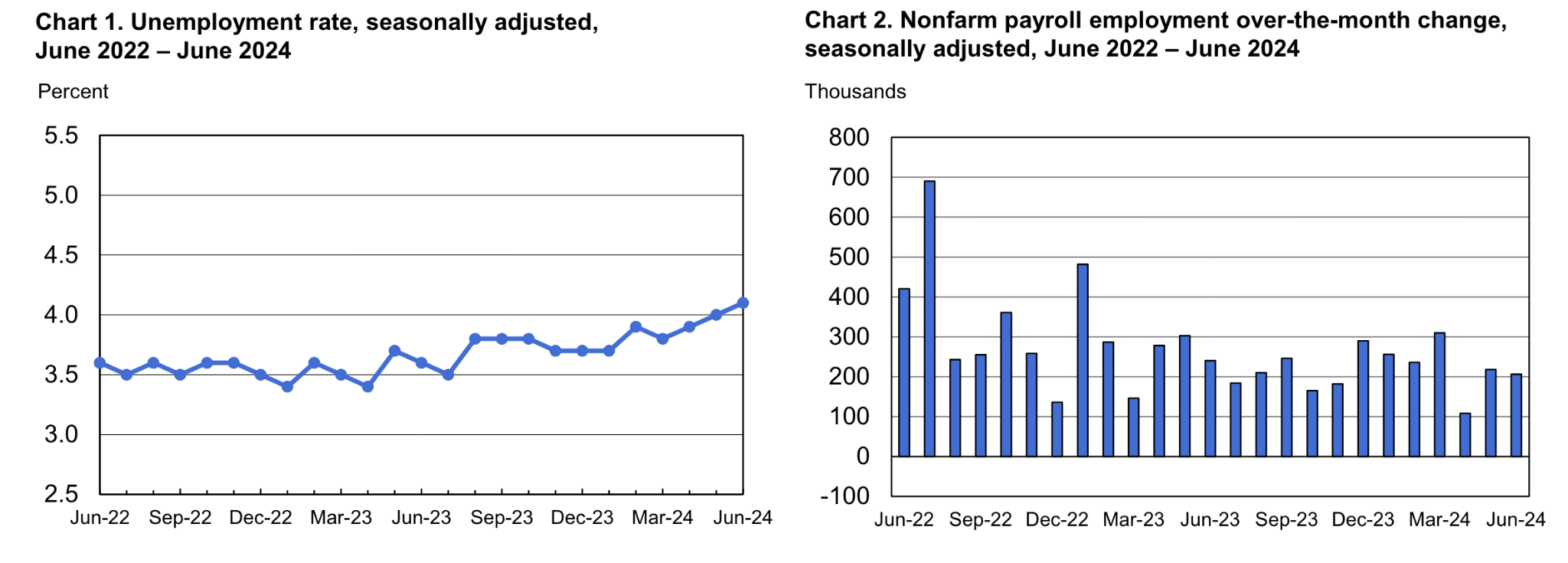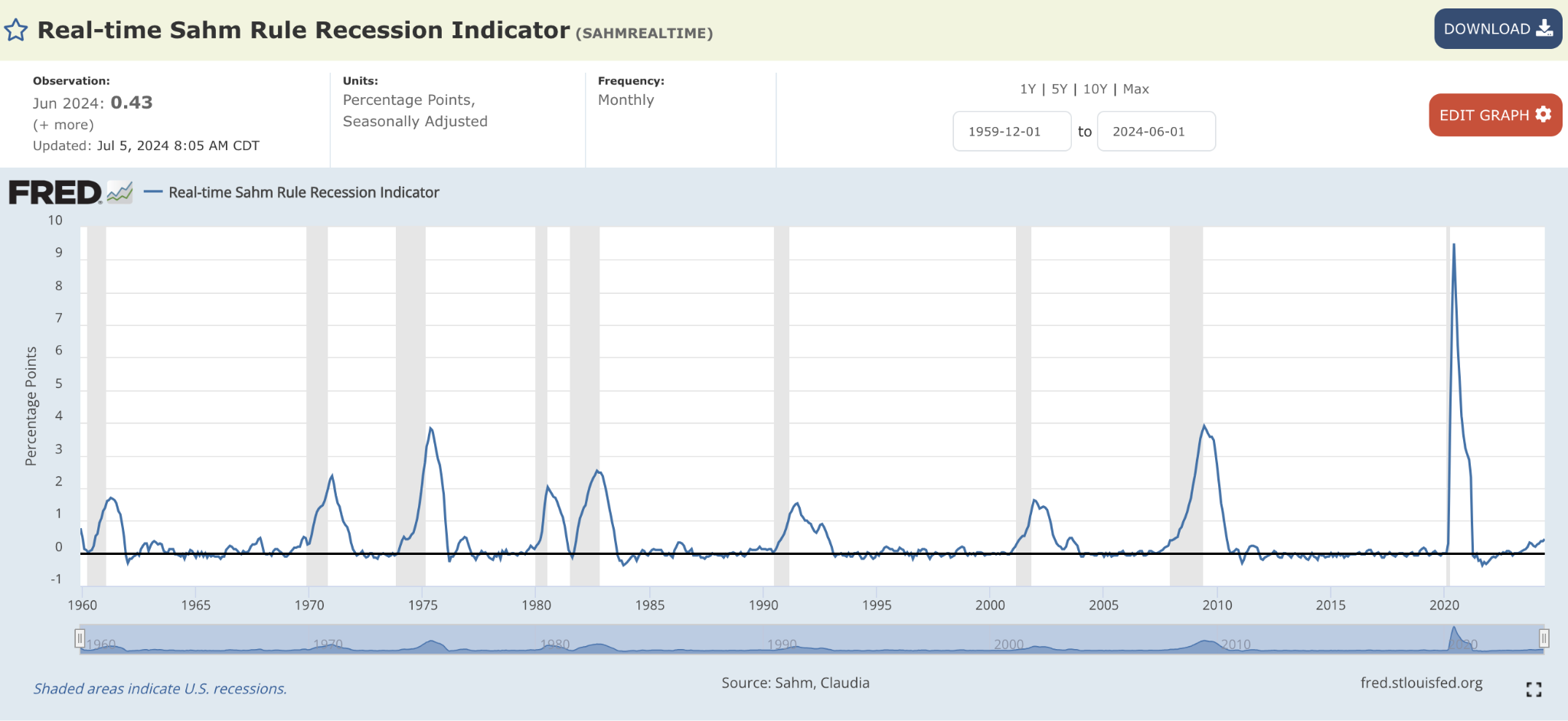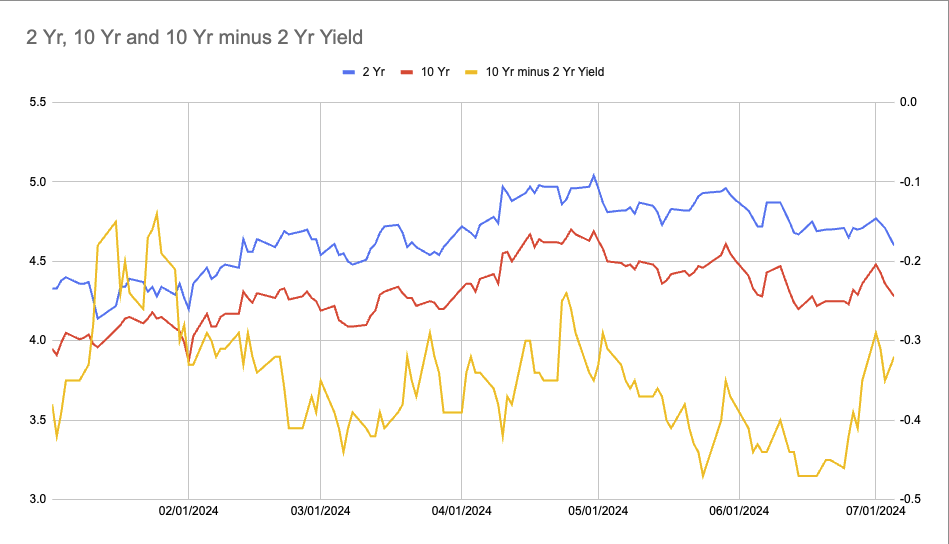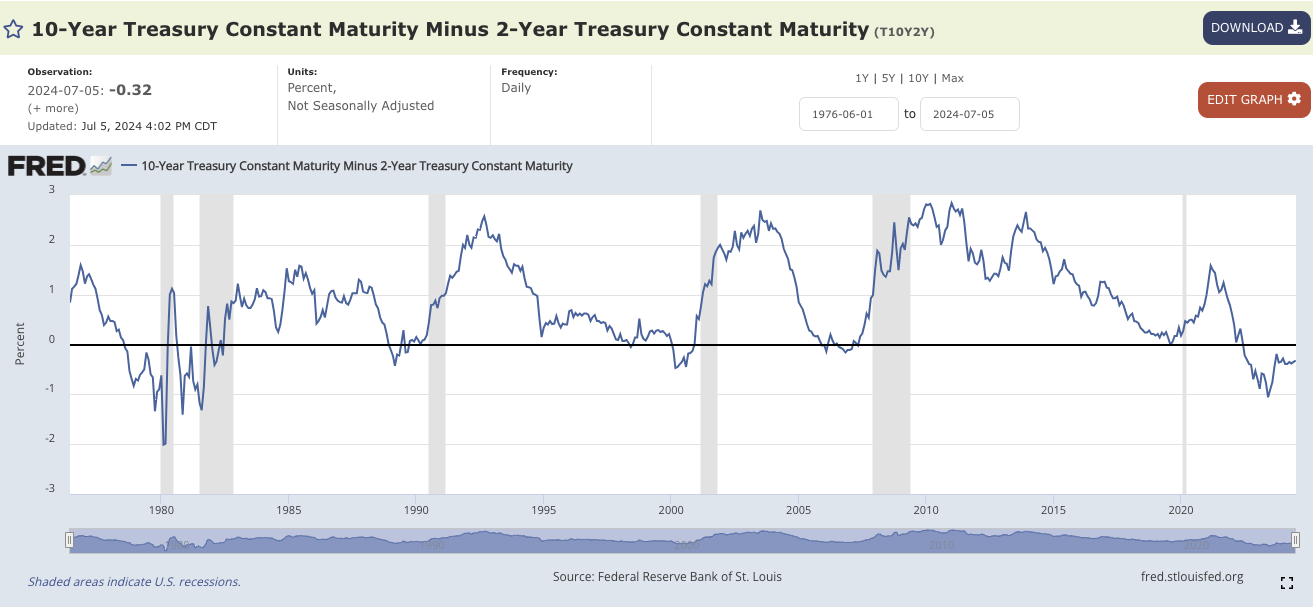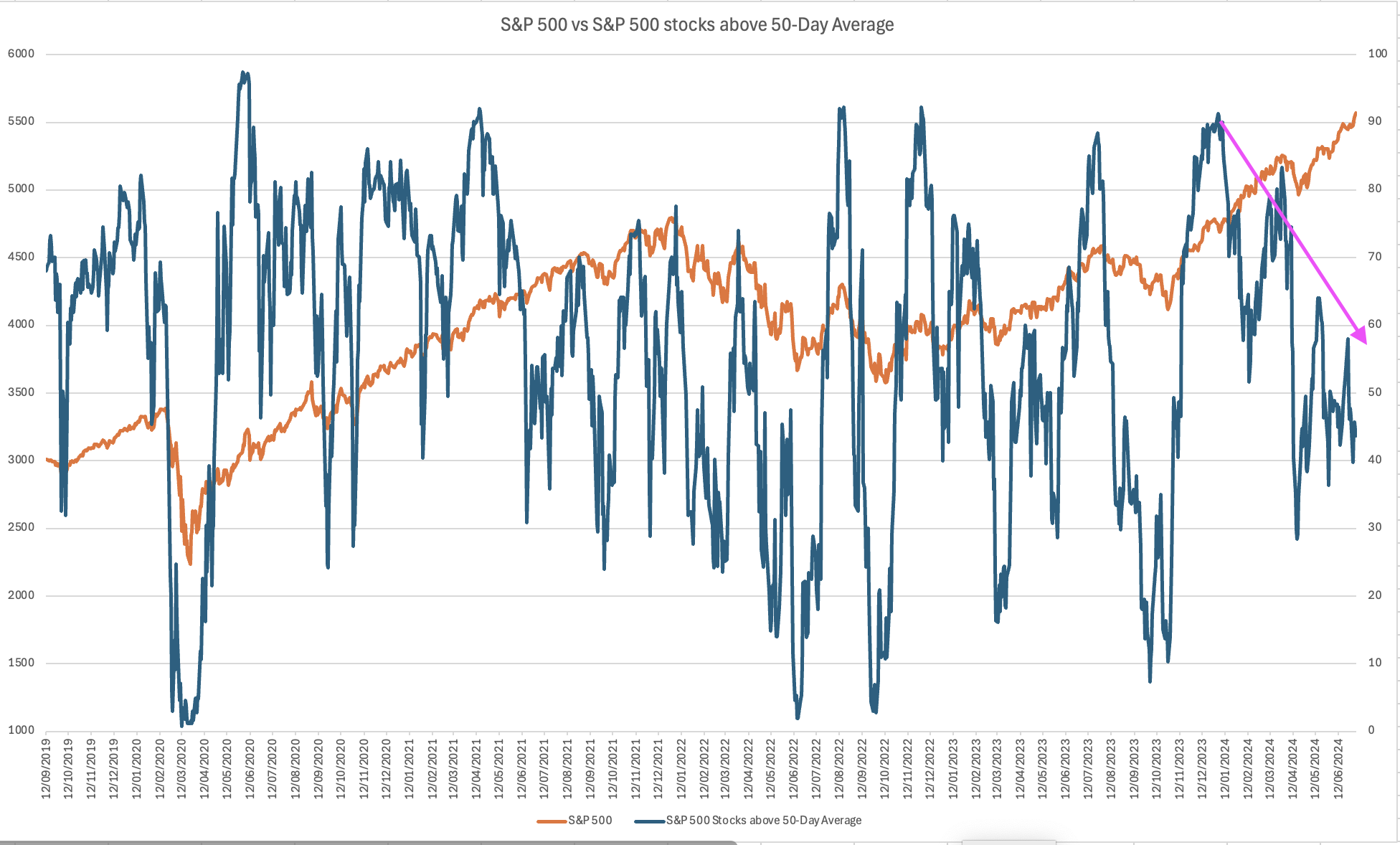Last week, US nonfarm payrolls increased by 206,000 in June, and the unemployment rate rose to 4.1% from 4.0% in May. The latest FOMC meeting minutes noted the slowing economy and diminishing price pressures, reigniting market hopes for a Fed rate cut.
Source: The Bureau of Labor Statistics
The unemployment rate rose to 4.1%, triggering the Sahm Rule. Developed by economist Claudia Sahm, this rule identifies the start of a recession when the three-month moving average of the national unemployment rate rises by 0.50 percentage points or more from its low in the previous 12 months. With June 2024's U-3 rate at 4.1%, the three-month average at 4.0%, and the lowest rate in the past year at 3.5% in July 2023, this criterion has been met.
Source: FRED
In the last FOMC meeting minutes, Federal Reserve officials noted that the U.S. economy was slowing and "price pressures were diminishing."
Source: US Department of Treasury
A key warning for the US economy is the inverted yield curve. When the 10-year Treasury yield minus the 2-year Treasury yield turns positive again, a recession is likely. Despite the yield curve turning negative since June 2022, no recession has occurred yet. This is partly due to the Fed's quantitative easing (QE), which involved buying long-term Treasury bonds and pushing down the long-term yield. Currently, the Fed is engaged in quantitative tightening (QT) which will buoyant the long term yield and has elevated short-term interest rates, artificially creating the inverted yield curve. This explains why the yield curve has remained inverted for so long without a recession.
Source: FRED
The market is focused on when the Fed will start rate cuts, despite two recession warning signs. The PCE for May dropped to 2.6%, and June unemployment is at 4.1%. The S&P 500, Nasdaq, Gold, and Silver all rose last Friday after the employment report. According to the June dot plot chart, seven Fed officials expect a quarter-point rate cut in 2024, while eight expect two cuts. The probability of a rate cut in September is now 69%, based on Fed Fund rate futures.
The S&P 500 is nearing new highs, but only 43.73% of stocks are above their 50-day moving average, down from 83.3% on March 28th. This indicates the rally is mainly driven by large-cap stocks, not a broad market rise. Additionally, last week's US employment report confirmed a slowing economy.
Source: Adopted from Reuters
Technical analysis
The NASDAQ's next resistance level is around 21,200, the upper limit of the regression channel. The stochastic indicator is in the overbought zone, and the market has priced in a rate cut. Despite positive market sentiment, investors should be cautious of a rapid rise.
Source: Deriv MT5
Conclusion
Recent economic data shows a slowing US economy with slight increases in unemployment and a cautious outlook from Federal Reserve officials. The S&P 500's rise, driven by a few large-cap stocks, indicates a narrow market rally. Indicators like the Sahm Rule and the inverted yield curve suggest potential recession risks. Despite this, the possibility of Federal Reserve rate cuts keeps market sentiment positive, highlighting the market's reliance on future monetary policy actions.
The information contained within this article is for educational purposes only and is not intended as financial or investment advice. It is considered accurate and correct at the date of publication. Changes in circumstances after the time of publication may impact the accuracy of the information. The performance figures quoted refer to the past, and past performance is not a guarantee of future performance or a reliable guide to future performance. No representation or warranty is given as to the accuracy or completeness of this information. Do your own research before making any trading decisions.
Recommended Content
Editors’ Picks

Gold moves to record highs past $3,340 Premium
Gold now gathers extra steam and advances beyond the $3,340 mark per troy ounce on Wednesday, hitting all-time highs amid ongoing worries over escalating US-China trade tensions, a weaker US Dollar and lack of news from Powell's speech.

Australian Dollar receives support from improved global risk mood, US Retail Sales eyed
The Australian Dollar extends its winning streak against the US Dollar for a sixth consecutive session on Wednesday, with the AUD/USD pair holding firm after the release of Australia’s Westpac Leading Index. The index’s six-month annualised growth rate eased to 0.6% in March from 0.9% in February.

EUR/USD remains in a consolidative range below 1.1400
EUR/USD navigates the latter part of Wednesday’s session with marked gains, although another test of the 1.1400 level remained elusive. The strong bounce in spot came on the back of a marked move lower in the US Dollar, which remained apathetic following the neutral stance from Chair Powell.

Bitcoin stabilizes around $83,000 as China opens trade talks with President Trump’s administration
Bitcoin price stabilizes around $83,500 on Wednesday after facing multiple rejections around the 200-day EMA. Bloomberg reports that China is open to trade talks with President Trump’s administration.

Future-proofing portfolios: A playbook for tariff and recession risks
It does seem like we will be talking tariffs for a while. And if tariffs stay — in some shape or form — even after negotiations, we’ll likely be talking about recession too. Higher input costs, persistent inflation, and tighter monetary policy are already weighing on global growth.

The Best brokers to trade EUR/USD
SPONSORED Discover the top brokers for trading EUR/USD in 2025. Our list features brokers with competitive spreads, fast execution, and powerful platforms. Whether you're a beginner or an expert, find the right partner to navigate the dynamic Forex market.
